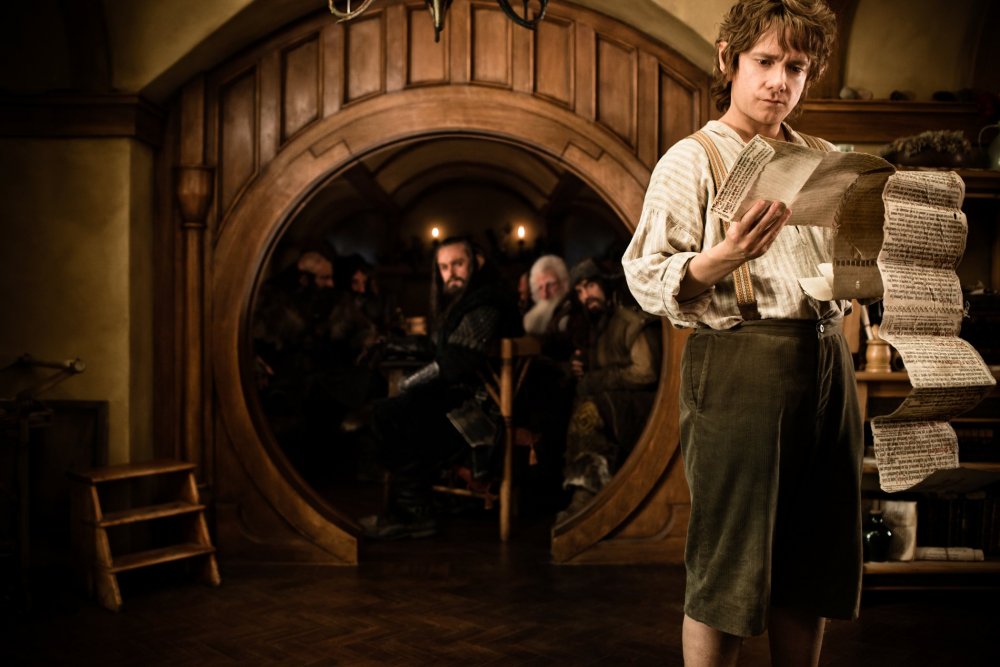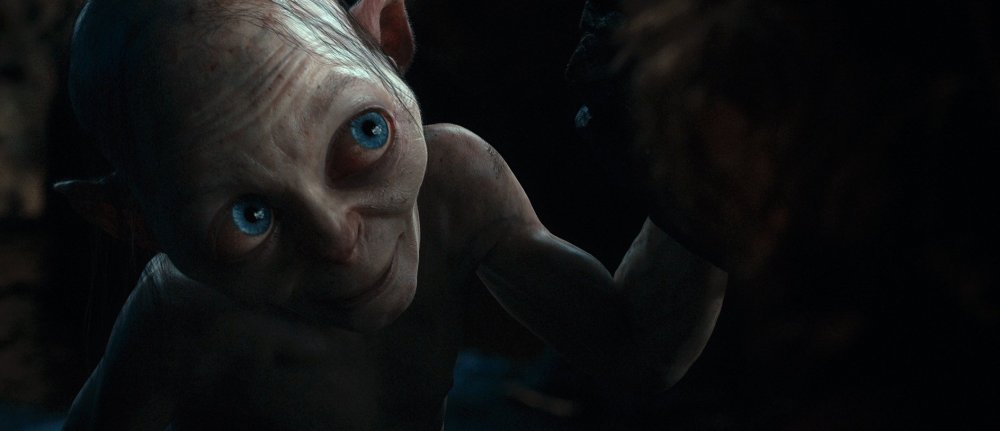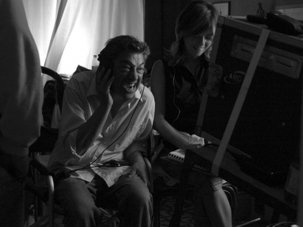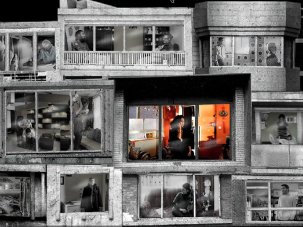from our February 2013 issue

The Encyclopedia of Fantasy (1997) has an entry called ‘Little Big’, which refers to fantasy’s frequent transits from little worlds to huge ones. The theme of ‘Little Big’ pervades The Hobbit: An Unexpected Journey. Based on the book by J.R.R. Tolkien, it goes from a hole in the ground to an epic, perilous landscape, following Martin Freeman’s redoubtable furry-footed everyman Bilbo as he traverses a world beyond his imagination. Even the opening minutes contrast two underground worlds on absurdly opposed scales. There’s Bilbo’s snug little hobbit-home with its cheery round green door and wooden passageways; and then there’s a vast glittering dwarf kingdom, plunging down bottomless like the alien Krell city in Forbidden Planet (1956).
‘Little Big’ has a different, ironic connotation for The Hobbit. The film runs nearly three hours and begins a trilogy, a mammoth saga based on one slim children’s book. Yet it’s a book that covers more story than many far thicker volumes. Single paragraphs and pages suggest titanic action scenes, or glimpse at whole adventures unseen, spanning generations of imagined history. Everyone knows that Tolkien’s sequel to The Hobbit, The Lord of the Rings, ballooned into an epic several times as long, already filmed as a trilogy (2001-03) by Peter Jackson. It’s less well known that Tolkien continually revised and rethought The Hobbit after its publication, as if he wondered himself how big it should be.
| USA/New Zealand 2012 Certificate 12A 169 mins Crew Cast Dolby Digital/Datasat/SDDS/PRP Distributor Warner Bros Distributors (UK) |
Jackson’s film draws on Tolkien’s appendices to The Lord of the Rings, where Tolkien rationalised The Hobbit’s plot, scaling it up towards the dimensions of its sequel. (Today, this would be colloquially called a ‘retcon’.) Bilbo thinks he’s on a one-off adventure, to help a group of dwarves slay a dragon and reclaim their stolen kingdom. Even in the book, the story goes past that; the mission’s catastrophic consequences are presumably for the third film. In Jackson’s expanded story, though, the adventure is already bigger than its heroes know, as Ian McKellen’s wizard Gandalf deploys them like chess pieces, plotting pre-emptive manoeuvres for the war to come in Rings.
Again, these contrasting perspectives are suggested in The Hobbit’s first minutes. When we’re shown the dragon destroying the dwarf kingdom, the scene is accompanied by Ian Holm’s voiceover commentary in high-flown bardic style. Then it switches to Bilbo’s cosy hollow, and the book’s famed first line in a children’s-tale register – “In a hole in the ground there lived a hobbit…” – and then into the comic invasion of Bilbo’s burrow by 13 dwarves, with belching games and flying plates.
Viewers who revere Jackson’s Rings trilogy may be alienated by the clashing tones. As someone who was largely unmoved by the first Rings film (The Fellowship of the Ring, 2001) and ambivalent about the trilogy as a whole, I found The Hobbit’s shifting scales bracing and enjoyable. It’s a far more humorous fantasy than Rings, seeing absurdity in grandeur and vice versa. There’s an openly pantomime, theatrical quality to Bilbo’s home invasion, which makes the decompressed pace more acceptable. (If only the long film could have followed theatre and had an interval.)
The home invasion is mirrored by a scarier but deliciously bizarre scene of Jackson’s invention, when the tree-home of a nature-wizard (Sylvester McCoy) is besieged by monsters, while he frantically protects an anthropomorphised hedgehog. For some viewers, this will be embarrassing whimsy; for others, a welcome intrusion of daffy, freewheeling fantasy into Jackson’s clompingly monumental style, which itself feels more human here. Even a dry meeting between Gandalf and his long-lived colleagues Saruman (Christopher Lee) and Galadriel (Cate Blanchett) is leavened by the secret affection that Galadriel shows Gandalf, letting us wonder about their relationship in some past age.

As Bilbo, Freeman appears confusticated but inherently sensible. In a pointed change from the book, he emphatically chooses to embark on the adventure (albeit with sly persuasion from Gandalf), rather than being bustled into it. He improvises child-pleasing strategies against pea-brained trolls; later in the film, he’s dispatched to an underground limbo by a certain magic ring. There, he silently decides to spare an enemy who terrifies him like no other, in the film’s best-acted scene; though, granted, his foe is the film’s best actor. This is the infantile CGI ghoul Gollum, played once more by Andy Serkis, who’s even more hilarious, scary and pitiful than he was in the Rings films.
This review follows a screening of the HFR (48fps) edition of the film, shown in 3D. As has been said elsewhere, the format gives a clarity to the picture that recalls TV drama or indeed live theatre. Given The Hobbit’s stylisations, clashing registers and Christmas-friendly theatrics, the format seems quite appropriate, whether intentionally or not. Even the ‘fake’-looking effects, such as the heroes crashing down a pit à la Indiana Jones and the Temple of Doom (1984), seem authentically, exuberantly fake in a way that old-school TV fantasy fans learned to love long ago.






